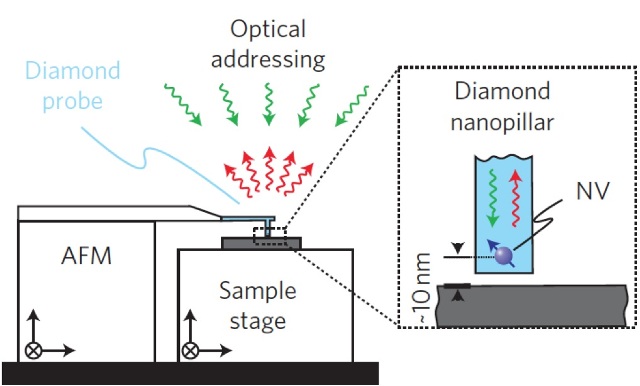Feb 16 2013
Quantum sensors introduce unprecedented exploration and control of the nano-scale world. Operating according to uniquely quantum mechanics laws, quantum sensors have the potential to achieve the highest possible sensitivity, efficiency and selectivity allowed by nature.

Fields such as quantum information science, nanotechnology and materials science have probed continually deeper into the atomic realm, pushing present-day sensor technology to its limits. With systematic methodologies for designing quantum sensors, quantum information science provides algorithms and techniques for overcoming unwanted noise and artifacts. Quantum sensors will provide new insights and discoveries in material structures, 3D molecular imaging, spintronics and more.
This symposium will highlight three experimental approaches to quantum sensors: magnetic resonance force microscopy, scanning probe microscopy with a diamond tip, and neutron interferometry. The speakers will explore the key questions, challenges and breakthroughs in their respective approaches, and discuss the important roles quantum sensors will play in science and next-generation technology.
Friday, February 15, 2013 8am – 9:30am Room 306 (Hynes Center, Boston)
Moderator:
Raymond Laflamme
Institute for Quantum Computing, University of Waterloo
Speakers:
Amir Yacoby
Harvard University
Another Use for Diamond: improved Scanning probe Microscopy
Raffi Budakian
University of Illinois at Urbana-Champaign
The ultimate MRI: Magnetic Resonance Force Microscopy
Professor David Cory
Institute for Quantum Computing, University of Waterloo
Reinventing Neutron Interferometry using Quantum Information Theory
Another Use for Diamond: Improved Scanning Probe Microscopy
The nitrogen-vacancy (NV) defects in diamond provide a solid-state nano-scale quantum system that is very coherent and controllable. In this ideal hybrid system, the electrons are optically controllable and their spin can by manipulated via microwaves. Recently, NV defects have been integrated into scanning probe microscopy techniques to perform magnetic sensing. This recent technology has the potential to find nano-scale imaging applications for functional materials.
The Ultimate MRI: Magnetic Resonance Force Microscopy
Magnetic Resonance Force Microscopy (MRFM) is a powerful new technique that combines the high sensitivity and spatial resolution of scanning probe microscopy with the 3-dimensional imaging capabilities of magnetic resonance imaging (MRI). Current MRFM techniques have sensitivity 10 billion times greater than a medical MRI and can even detect a single electron spin. MRFM has the potential to image 3D molecular structure, which would have tremendous impact on fields such as materials science, nanotechnology, life sciences, and more.
Reinventing Neutron Interferometry Using Quantum Information Theory
Neutrons make for non-destructive, durable and sensitive probes of functional materials, but until recently neutron interferometry was hindered by sensitivity to mechanical vibrations. New breakthroughs inspired by concepts in quantum information processing will significantly increase the robustness of neutron interferometry allowing practical quantum sensing with a range of potential applications, from fuel cell testing to probing nano-defects in fabricated materials.